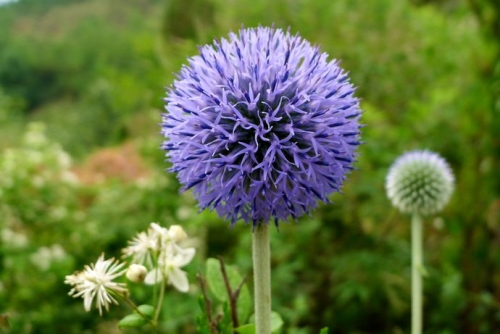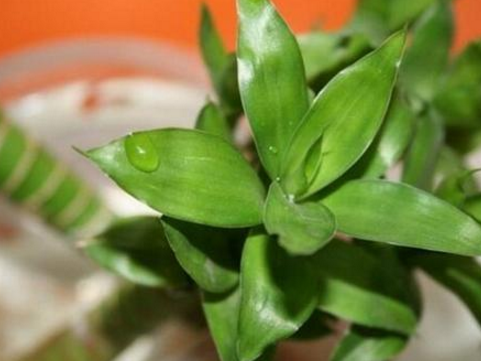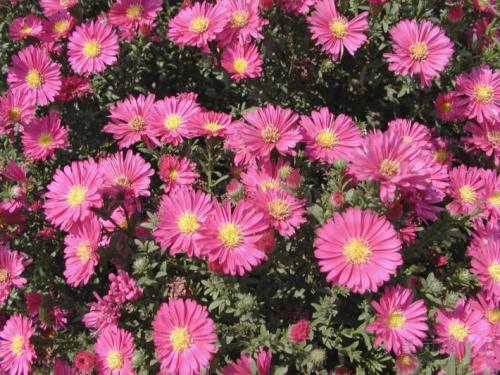Maintenance method of blue thorn head
Blue thorn head is very adaptable, and resistant to drought, barren and cold. When cultivating, we should choose sandy soil with good ventilation and good water retention capacity. We should place it in a cool and ventilated place for maintenance. Avoid hot, wet and waterlogged environment. As long as you take care of it, it is a good plant!

After reading the flower words of the blue thorn head, plant a pot as soon as possible! Let the good always be with you!
Culture methods and matters needing attention of blue thorn head
Latin name Echinops sphaerocephalus L.
Binomial Echinops sphaerocephalus
The plant kingdom.
Phylum angiosperm
Dicotyledonous class
Citrus pedunculata
Compositae
Subfamily Tubulinae
Blue thorn head tribe
Belongs to the blue thorn head genus
Seed blue thorn head
Distributed in China, the Soviet Union, central and southern Europe
Echinops sphaerocephalus L is a genus of Compositae, distributed in Eastern Europe, Africa and Asia. There are more than 10 species in China, mainly from northwest to northeast. Stout herbs, somewhat thistle-like, stems and leaves more or less white woolly; leaves alternate, often pinnatifid or parted, teeth and lobes spiny; heads with 1 floret each; involucre composed of spiny outer bracts and linear or lanceolate inner bracts, all flowers aggregated into a dense, globose compound head, with leaf-shaped bracts drooping and hidden at the bottom of the inflorescence Achenes long, quadrangular or cylindrical, often villous, with many short scales at the top. It is a kind of excellent honey plant and has great medicinal value.
1. Morphological characteristics.
Herbs perennial, 50-150 cm tall. Stems solitary, upper branches long or short, stout, all stem branches covered with dense multicellular long nodal hairs and sparse spider silk-like thin hairs. Basal and lower stem leaves full-shaped and broadly lanceolate, 15-25 cm long and 5-10 cm wide, pinnatifid, lateral lobes 3-5 pairs, triangular or lanceolate, margin prickly-toothed, tip acuminate, upward leaves gradually smaller, homomorphic and equally divided with basal leaves and lower stem leaves. All leaves are thin, papery, discolored on both sides, green above, densely short rough, gray-white below, thin arachnoid woolly, but with multicellular nodal hairs along the midrib. Compound capitate inflorescences solitary apical stem branches, 4-5.5 cm in diam. Head 2 cm long. Basal hairs 1 cm long, half of involucre length, white, flat hairy, unequal. Outer bracts slightly longer than basal hairs, long oblanceolate, distal elliptic enlarged, brown, outside slightly densely hispid and glandular dots, margin slightly longer ciliate, apical needle long acuminate, claw lower part with up to 4 mm long ciliate; middle bract oblanceolate or long elliptic, ca. 1.1 cm, margin long ciliate, densely hispid outside The inner layer is lanceolate, 8 mm long, the outer layer is densely hispid, the apical awn tooth is cleft or the awn leaf is lobed, and the middle awn crack is longer. All bracts 14-18. Florets light blue or white, Corolla 5-parted, lobes linear, Corolla tube without glandular spots or sparse glandular spots. Achenes obconical, ca. 7 mm, densely appressed long straight hairs with yellow, not covered with crown hairs. Crown hairs cup-shaped, ca. 1.2 mm high; crown membranes linear, margin scabrous, mostly United. Flowering and fruiting period from August to September.
Blue thorn head Echinops sphaerocephalus L. Blue thorn head picture: blue thorn head how to raise / blue thorn head how to breed blue thorn head business card blue thorn head Echinops sphaerocephalus L. Alias: blue star ball classification: annual herbaceous floral genera: plant kingdom angiosperm dicotyledonous class Platycodon grandiflorum flowering: autumn blue thorn head (Echinops sphaerocephalus L) is Compositae blue thorn head plant, distributed in Eastern Europe, Africa to Asia, about 10 species in China, mainly produced from northwest to northeast. Stout herbs, somewhat thistle-like, stems and leaves more or less white woolly; leaves alternate, often pinnatifid or parted, teeth and lobes spiny; heads with 1 floret each; involucre composed of spiny outer bracts and linear or lanceolate inner bracts, all flowers aggregated into a dense, globose compound head, with leaf-shaped bracts drooping and hidden at the bottom of the inflorescence Achenes long, quadrangular or cylindrical, often villous, apical. Introduction to the culture methods and matters needing attention Echinops sphaerocephalus L is a plant of the genus Compositae, which is distributed in Eastern Europe, Africa and Asia. There are about 10 species in China, mainly from northwest to northeast. Stout herbs, somewhat thistle-like, stems and leaves more or less white woolly; leaves alternate, often pinnatifid or parted, teeth and lobes spiny; heads with 1 floret each; involucre composed of spiny outer bracts and linear or lanceolate inner bracts, all flowers aggregated into a dense, globose compound head, with leaf-shaped bracts drooping and hidden at the bottom of the inflorescence Achenes long, quadrangular or cylindrical, often villous, with many short scales at the top. It is a kind of excellent honey plant and has great medicinal value. Morphological characteristics of blue thorn head stem blue thorn head perennial herbs, 50-150 cm tall. Stems solitary, upper branches long or short, stout, all stem branches covered with dense multicellular long nodal hairs and sparse spider silk-like thin hairs. Basal and lower stem leaves of leaf blue thorn head full-shaped and broadly lanceolate, 15-25 cm long and 5-10 cm wide, pinnatifid, lateral lobes 3-5 pairs, triangular or lanceolate, margin prickly teeth, tip acuminate, upward leaves acuminate, upward leaves acuminate, homomorphic and equally divided with basal leaves and lower stem leaves. All leaves are thin, papery, discolored on both sides, green above, densely short rough, gray-white below, thin arachnoid woolly, but with multicellular nodal hairs along the midrib. The flower blue thorn head is the tip of a solitary stem branch of a compound head, 4-5.5 cm in diameter. Head 2 cm long. Basal hairs 1 cm long, half of involucre length, white, flat hairy, unequal. Outer bracts slightly longer than basal hairs, long oblanceolate, distal elliptic enlarged, brown, outside slightly densely hispid and glandular dots, margin slightly longer ciliate, apical needle long acuminate, claw lower part with up to 4 mm long ciliate; middle bract oblanceolate or long elliptic, ca. 1.1 cm, margin long ciliate, densely hispid outside The inner layer is lanceolate, 8 mm long, the outer layer is densely hispid, the apical awn tooth is cleft or the awn leaf is lobed, and the middle awn crack is longer. All bracts 14-18. Florets light blue or white, Corolla 5-parted, lobes linear, Corolla tube without glandular spots or sparse glandular spots. Achenes obconical, ca. 7 mm, densely appressed long straight hairs in yellow, not covered with crown hairs. Crown hairs cup-shaped, ca. 1.2 mm high; crown membranes linear, margin scabrous, mostly United. The flower and fruit period of blue thorn head is from August to September. The ecological habit of blue thorn head is strong adaptability, drought resistance, barren resistance, cold resistance, like cool climate and well-drained sandy soil, avoid heat and waterlogging, and can be managed extensively. It is a good perennial flower with summer flowers. The cultivation techniques of blue thorn head can be propagated by seed propagation, root cuttage and tissue culture. 1. The seed propagation is relatively simple, and the seeds of blue thorn head are easy to germinate under the condition of 20 ℃ ~ 25 ℃, and the emergence rate is high, but the character separation of the progeny obtained by this method is relatively large, which reduces the ornamental quality of blue thorn head. two。 The root of blue thorn head of root cutting has a strong ability of adventitious bud regeneration, a large number of adventitious buds can be obtained by root cutting, and the offspring with stable characters can be obtained by cutting propagation. In general, root cuttings are used to propagate, which can maintain the excellent characteristics of the mother plant. The method is that the substrate ∶ river sand ∶ peat = 1 ∶ 1 ∶ 1, and the root segment is cut into 2~3cm length. After the root is inserted, the seedling plate can be covered with plastic film to maintain humidity. After 10 days, the white protuberant callus was formed at the upper end of the segment, then the adventitious buds were differentiated, and the adventitious roots were differentiated at the lower end after 20 days. This method can be carried out all the year round in the greenhouse, if the open field can be carried out in March in spring, and the cuttings can be planted after two months of growth. The areas with good drainage were selected and planted according to the row spacing of 40cm × 40cm plants, and then watered once. Pay attention to weeding in ploughing, proper control of watering, and timely drainage after rain. 3. Tissue culture can carry out industrial production by using tissue culture technology, realize the rapid propagation of blue thorn head fine varieties, obtain virus-free plants and keep the original good characters unchanged, and can also use tissue culture mutagenesis to cultivate new varieties. Cultivation: should be planted in sunny, well-drained soil. The distribution area of blue thorn head is distributed in Tianshan area. Born on the edge of a forest or canal on a hillside. The Soviet Union (Central Asia, Caucasus, Siberia), central and southern Europe are widely distributed. The medical information and health food therapy information of the dietotherapy or medicinal value protection net are for reference only, and can not be used as the basis for diagnosis and medical treatment. Any health problems should consult professional health care personnel, the treatment of any disease, please follow the doctor's advice. The ultimate task of protecting flowers: to love yourself, proceed from reality and follow the doctor's advice. For disease, do not be careless, do not postpone, do not give up hope, face it bravely, warm the silent world with love, and protect the inner flower field with your heart. In Europe, some species of blue thorn have been widely cultivated as ornamental plants, a few annual species have certain medicinal value, some species can be used as nectar plants, and some species contain alkaloids, which are toxic to livestock. Pharmacological action 1. Bacteriostatic test: the water extract of blue thorn head had different inhibitory effects on Xanthophytes xanthophyllum, closely colored germs, Nucaspora stellata and other skin fungi in the test tube. two。 The ecdysone contained in the blue thorn has the effect of adapting to the original. 3. Ecdysterone can reverse hyperglycemia caused by glucagon and inhibit the synthesis of liver cholesterol. 4. It can increase the number and ratio of T lymphocytes in peripheral blood of normal and immunosuppressed animals. 5. Blue thorn head decoction can improve hyperlipidemia, reduce arteriosclerosis, reduce the content of lipofuscin in visceral tissue, and prevent the damage of free radicals to aging body. 6. Different extracts of Radix Scutellariae have different scavenging effects on many kinds of reactive oxygen species. 7. The aqueous extract of Rhizoma Scutellariae has an obvious antagonistic effect on the photooxidation of photopurine, which is related to the scavenging of singlet oxygen produced by photopurine. The decoction of Rhizoma Rehmanniae and its aboveground part can inhibit the formation of lipid peroxidation in heart, brain, liver and kidney of rats and have the effect of anti-lipid peroxidation. Efficacy introduction [traditional Chinese medicine name]: Yuzhou leaking Lu [Pinyin name]: YuzhouLoulu [English name]: RADIXECHINOPSIS [Source]: this product is the dried root of EchinopsLatifoliusTausch or EchinopsgrijisiiHance of Compositae. In the second season of spring and autumn, the fibrous roots and sediment were removed and dried. [character]: this product is cylindrical, slightly twisted, long 10~25cm, diameter 0.5~1.5cm, surface grayish yellow or grayish brown, with longitudinal wrinkles and fibrous brown bristles at the top. The quality is hard, not easy to break, the cross-section skin is brown, and the wood shows a yellow-black radial texture. The breath is slight, the taste is slightly astringent. [processing]: remove impurities, wash, moisten thoroughly, cut thick slices, and dry. [sex taste and classics]: bitter, cold. Return to the stomach meridian. [function and indications]: clearing heat and detoxification, expelling pus and stopping bleeding, eliminating carbuncle and lower breast. Used for sore carbuncle wind, breast carbuncle swelling and pain, milk blockage, eczema sore poison. It is also used as an ascaris repellent. [usage and dosage]: 4.5g / kg [storage]: put in a ventilated and dry place. Instructions for sore carbuncle early red swelling and heat pain, often with forsythia, rhubarb and so on; for breast redness, swelling and pain to carbuncle swelling, often with Trichosanthes, dandelion, Fritillaria and so on. This product can also pass milk, and Tongcao, Wang Bu line and other compatibility, but also can be used for milk. It can also be used for all kinds of tumors. Such as liver tumor, often with Scutellaria barbata, Scutellaria barbata, stone see wear and other applications. The blue thorn head is used as an ornamental plant in the garden. The blue thorn head, also known as the Blue Planet, is blue-gray in color and has two forms of "single head" and "multi-head". It can also be made into natural dried flowers (some leaves must be removed first and hung upside down in a ventilated place. Drying can be done in a week). At present, this plant is seldom used in China. However, because of its unique shape and color, I believe it will be deeply loved by the Chinese people in the near future. The function and use of blue thorn head 1. Flower decoration blue thorn head can be used as fresh cut flowers and dried flowers. Because of the peculiar flower shape, colorful flowers and long viewing period, it can be used in the flower decoration of families, hotels and restaurants. After listing, the cut flowers are loved and recognized by consumers, especially foreign friends, and are expected to enter the international market. two。 The application of blue thorn in garden is a unique wild flower in high-altitude grassland and mountainous area. after introduction, it shows the characteristics of extensive management, strong adaptability and low maintenance cost, and has high ornamental value, such as colorful flowers and unique inflorescence, so it has a very broad application prospect in landscaping. Single plant ornamental blue thorn head plant type is beautiful, and its pedicel is drawn from the leaves, and there are more branches, ranging from 3 to 12 branches; the number of flower heads is as few as 40; the diameter of the flower ball is 4cm; the flower color is blue, blue-purple, white and so on; the single plant is very eye-catching in the lawn green space, road corners and other places, attracting tourists' attention. Due to the gradual withering of the aboveground parts after the flowering period, attention should be paid to planting with other plants to create a continuous landscape. Cunninghamia lanceolata has a good clustered character, and its root has a strong ability to regenerate adventitious buds, which will show a kind of clustered landscape after a few years. Clumps of blue thorns grow on the lawn green space or under the sparse forest, which makes the rigid green space full of wild interest and gives people the psychological satisfaction of being close to nature. The blue thorn head piece is planted as a flower border; planted on both sides of the road. Soften stiff road curves and avoid regular hedge lines. If planted with evergreen shrubs, it can create a changing landscape, which is far better than the planting form of a single shrub green belt. In addition, planting in flower beds can also meet the needs of diversified colors. With the rapid development of urban landscape construction, ground cover plants as a carrier of landscape and ecological functions have been paid more and more attention by designers. The blue thorn head is used as the ground cover plant, which has many excellent characteristics. It has wide ecological distribution, strong adaptability and resistance, can grow well under arid, barren land and hillside sparse forest, and can be viewed for many years at a time, which greatly saves the management cost. The combination of it and other 2012 grass and flowers is applied to flower beds, flower borders, mountain slope protection, especially under sparse forest space, which can not only make rational use of space, but also create a continuous landscape, so the landscaping material has great potential for development. Blue thorn head picture
- Prev

Treatment of yellowing leaves of rich bamboo cultured in water
1. For the rich bamboo cultured in water, water is the most basic nourishment for its growth, so it may make the leaves yellow. at this time, it is necessary to check whether its root system is fresh or not. if there is rot, it needs to be cut off and add cold boiled water. Light is also a direct factor in the yellowing of leaves, if the light is too dark
- Next

Maintenance measures and matters needing attention of Dutch chrysanthemum
1. Light management Dutch chrysanthemum likes a sunny and ventilated environment and is resistant to drought, so make sure there is plenty of sunshine. 2. Watering management Dutch chrysanthemum should be watered in the right amount, not too much, according to the dry soil, and keep in mind that there can be no stagnant water.
Related
- Fuxing push coffee new agricultural production and marketing class: lack of small-scale processing plants
- Jujube rice field leisure farm deep ploughing Yilan for five years to create a space for organic food and play
- Nongyu Farm-A trial of organic papaya for brave women with advanced technology
- Four points for attention in the prevention and control of diseases and insect pests of edible fungi
- How to add nutrient solution to Edible Fungi
- Is there any good way to control edible fungus mites?
- Open Inoculation Technology of Edible Fungi
- Is there any clever way to use fertilizer for edible fungus in winter?
- What agents are used to kill the pathogens of edible fungi in the mushroom shed?
- Rapid drying of Edible Fungi

